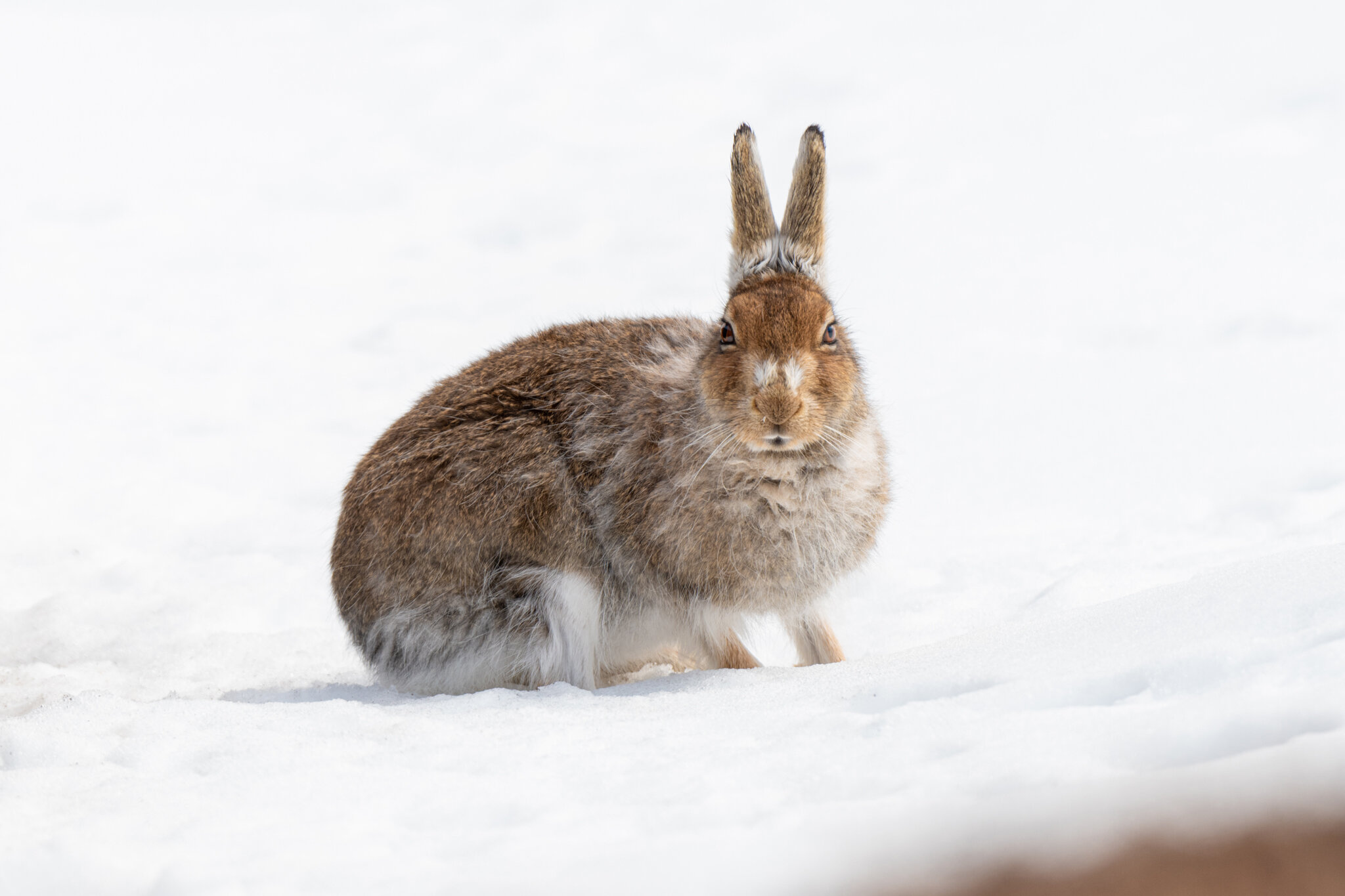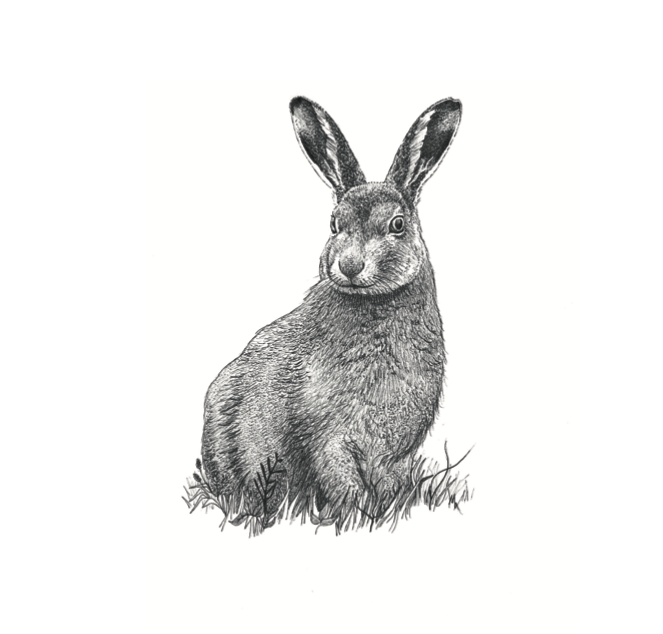By Karen Miller.
I can think of nothing I enjoy more than sitting on a heather clad hillside in the presence of one of Scotland's most iconic native species - the mountain hare (Lepus timidus). They are beautiful, hardy animals, surviving in harsh weather conditions.
Mountain hares are the UK’s only native species of hare. They are found in upland areas, primarily in Scotland but also on some of the higher peaks in North England. Unlike the brown hare, mountain hares turn white over the winter with only the tips of their ears remaining dark. This is to help camouflage them from predators, however, with global warming the hills tend to have less snow coverage, for shorter periods, and being white can be a disadvantage when there’s no snow. Mountain hare numbers have been in serious decline in recent years.
Fortunately there is some good news. From 1 March 2021 Scottish mountain hares are included on Schedule 5 of the Wildlife & Countryside Act 1981 (as amended), giving them full protection. This means that at any time of the year, anyone who intentionally or recklessly kills, injures or takes mountain hare without a licence will be acting unlawfully. Hopefully this will help to save these wonderful creatures.
My first encounter with a mountain hare came in 2016 when I spent an inspiring and memorable week at the Aigas Field Centre on a photography masterclass with renowned photographer - Laurie Campbell. The whole week was an eye-opener but for me the highlight, the event that shaped who I am today, was locating and photographing mountain hares. It was July, a relatively warm day. We found one at the side of the road, a leveret, we then climbed part-way up a path and onto a hill. Laurie spotted a hare sitting a short distance away, I presumed it would run, it didn't! I also presumed we wouldn't approach any closer, but we did. And the hare stayed put! I couldn't believe it. We sat and watched as it groomed, totally relaxed in our presence. It was beautiful. We also spent time with a younger animal. I was in love.
Photo: Karen Miller (www.karenmillerphotography.co.uk)
There's something about being able to sit close to a wild animal which knows you are there. It's even better when there's no baiting, no hides and wonderful views around you. Now, a few years later I still find it hard to express how it made me feel. The experience had everything I love about wildlife, the outdoors and photography. Even sitting out in a blizzard with the wind and snow hammering me and my camera I still love being on the hill with the hares.
Photo: Karen Miller (www.karenmillerphotography.co.uk)
I was lucky. Back in 2016, and my first winter on the hill in March 2017, the population of mountain hares on the Estate I visit was healthy. I had little experience but was able to locate the hares on the hill without too much trouble. If one hare ran or didn't do much, there were others to choose from. It was a great learning experience. The week I was there we had some snow, but conditions were relatively easy - a good introduction to winter mountain hare photography. I even managed to photograph one of the hares “waving” – (when they clean their huge back paws they spread the fingers out to clean between the toes).
Photo: Karen Miller (www.karenmillerphotography.co.uk)
Mountain hares are, for the most part, nocturnal. Therefore during the day you can expect them to spend the vast majority of their time snoozing or gazing into space. Patience is required for all wildlife photography, and especially for mountain hares! But sit with an animal for long enough and you might well experience some fantastic behaviours.
I sat with this hare for a few hours of absolutely nothing before I was treated to a roll in the snow.
Photo: Karen Miller (www.karenmillerphotography.co.uk)
In an ideal world we want to see a hare grooming, stretching, shaking, yawning, grazing and if very lucky boxing. When any of this happens it is fantastic.
Photo: Karen Miller (www.karenmillerphotography.co.uk)
Sometimes you can be sitting with a hare and it decides to approach you! This can be running or grazing. I love it when this happens!
Mountain hares aren't just for winter, they are around all year and in my opinion just as photogenic. In late March/April they go through "the change" - their white winter pelage moults and they turn brown/grey. I adore how they look during this period - all are quite unique and it gives them real character. There's still the chance of snow and boxing at this time too.
Come June and you may well be treated to the first leverets of the season. These adorable little bundles can be found all over the hill throughout the summer & autumn. They tend to be easier to find than adults over the summer and stick to the same location so can be sought out again and again. It’s lovely to get to know individuals.
Photo: Karen Miller (www.karenmillerphotography.co.uk)
Finding hares over the summer is really difficult as most adults disappear into forms, thick heather and ditches to avoid the sun and insects. However if you can find them in August they do look beautiful with the flowering heather.
Photo: Karen Miller (www.karenmillerphotography.co.uk)
Mountain hares are very special animals who are currently fighting for survival in the UK. They have almost disappeared now from the estate I’ve been photographing them on and it’s heart breaking. We need to cherish and protect those that remain, it would be a tragedy if we were to lose them from our hills.
Take a look at our hare range below…
10% of every purchase from our mountain hare range is donated to the People’s Trust for Endangered Species. The PTES with the help of scientists, conservationists, landowners, and the general public, are working to protect our delicately balanced ecosystem by bringing our most threatened species back from the brink.
















